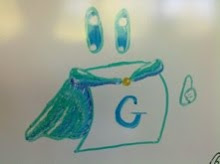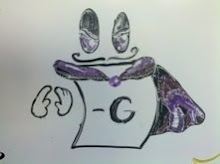Today, during our Reversi presentation, the question came up about the value of the final game states. I mentioned that one interpretation was that the result is equal to the number of blue circles minus the number of red circles. Another way to think of it was to consider that immediately after the Reversi game ends, a new game is played equal to that number value. This avoids ties: if the score is the same at the end, then the last player to move on the original game wins.
The students grabbed on to this idea and ran with it, chatting about it as the game continued. This method extends to other similar games that normally end by comparing point scores: Dots 'n' Boxes, Flume, etc. Even Hex can be conceived like this: the "score" for the winner could be the number of uncolored hexagons remaining on the board. Thus, the faster you win, the more the game is worth.
Notice that this doesn't make a difference if this is not part of a game sum. Without other attached games (or bragging rights) the only important part is whether or not you can win this game. In this case, it is instead equivalent to say that after game play is finished, we just append a game of value either -1 or 1 after the original game ends, depending on who "earned more points".
Does anyone ever play game sums with either of these methods? Anyone prefer one over the other?



No comments:
Post a Comment